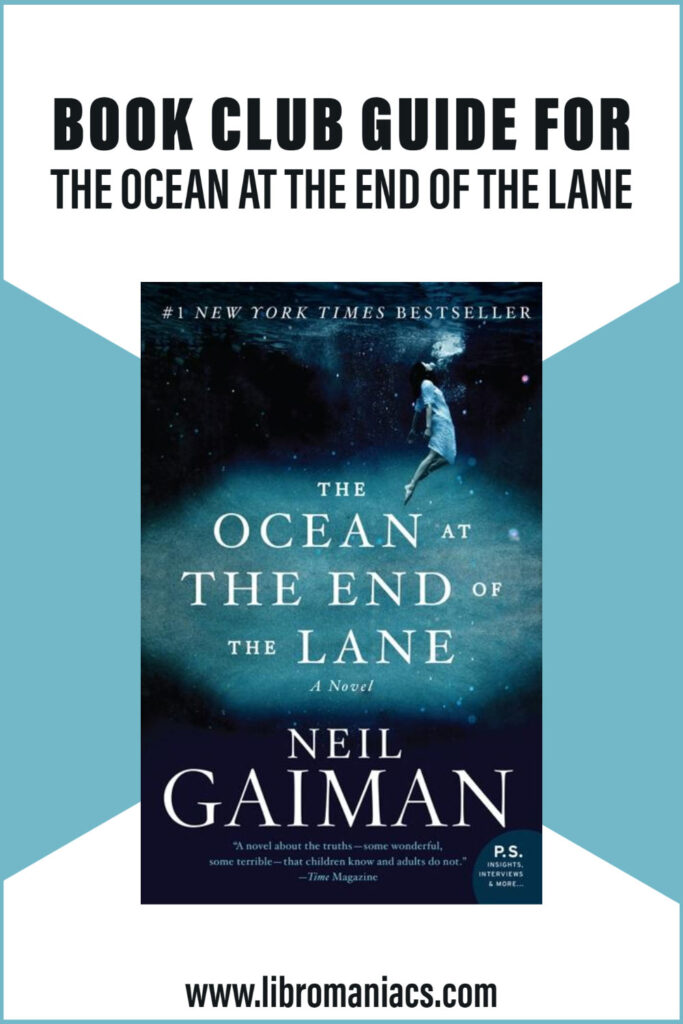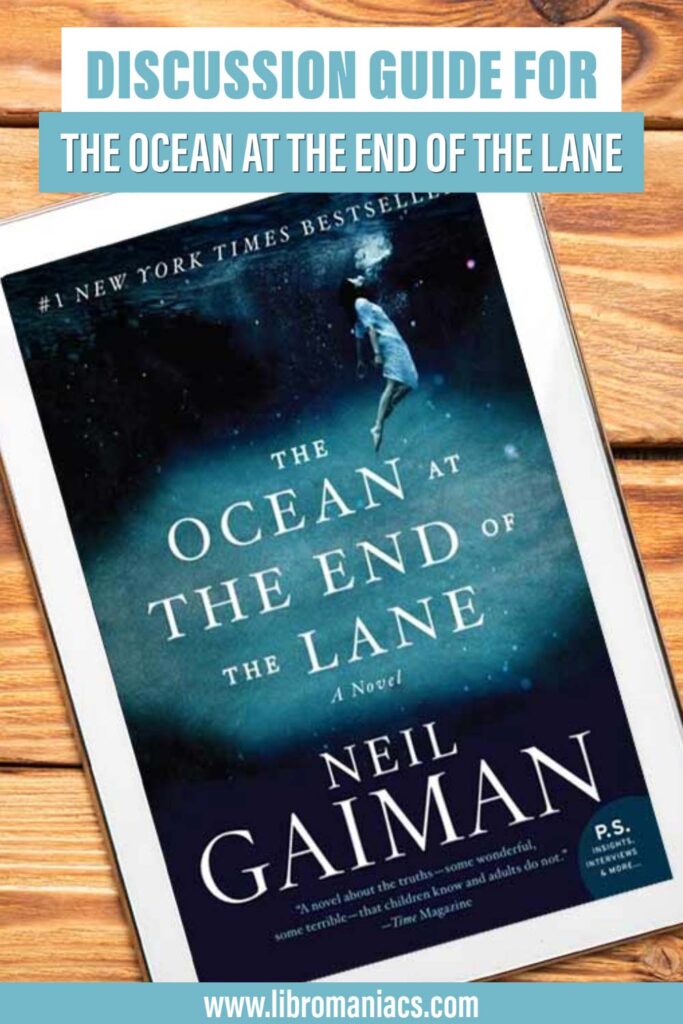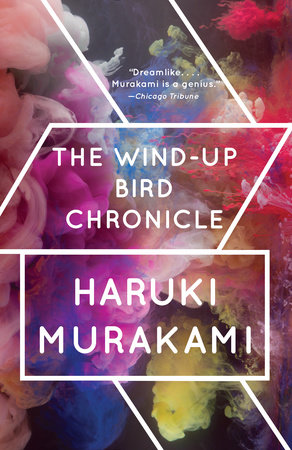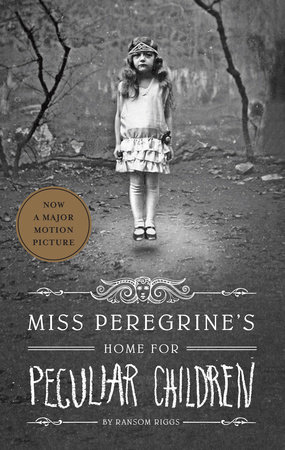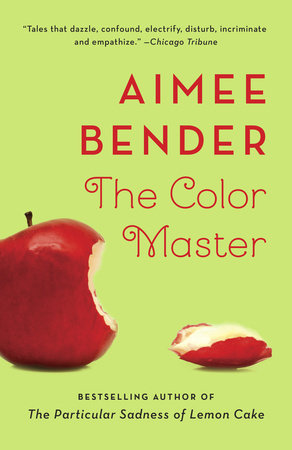Reading The Ocean at the End of the Lane for book club will give you so much to talk about. This fable by Gaiman features a kid, but it’s not for kids. The tone is dark, twisty and full of lightening. The book’s themes include how adult power can be monstrous, how memory can be fickle, mythical imagination, childhood loneliness and so much more.
Be prepared for a robust conversation using these The Ocean at the End of the Lane book club questions. The discussion guide features a book synopsis, 10 starter questions and selected reviews (including one from author Patrick Rothfuss that is absolutely priceless.)
Then keep reading because we also have suggestions for three books like The Ocean at the End of the Lane.

(This article contains affiliate links. This means that if you choose to purchase, I’ll make a small commission.)
The Ocean at the End of the Lane Synopsis
The Ocean at the End of the Lane, by Neil Gaiman
This bewitching and harrowing tale of mystery and survival, and memory and magic, makes the impossible all too real…
A middle-aged man returns to his childhood home to attend a funeral. Although the house he lived in is long gone, he is drawn to the farm at the end of the road, where, when he was seven, he encountered a most remarkable girl, Lettie Hempstock, and her mother and grandmother. He hasn’t thought of Lettie in decades, and yet as he sits by the pond (a pond that she’d claimed was an ocean) behind the ramshackle old farmhouse where she once lived, the unremembered past comes flooding back. And it is a past too strange, too frightening, too dangerous to have happened to anyone, let alone a small boy.
A groundbreaking work as delicate as a butterfly’s wing and as menacing as a knife in the dark, The Ocean at the End of the Lane is told with a rare understanding of all that makes us human, and shows the power of stories to reveal and shelter us from the darkness inside and out.
10 The Ocean at the End of the Lane Book Club Questions
You may want to check out this video from Politics & Prose, in which Gaiman answers reader questions and talks about the origin of the book.
- In an interview, Gaiman noted that he modeled the protagonist after his seven year old self. He included settings and incidences from his childhood. What Gaiman didn’t do, was name the Boy. Did you notice that he was never named? If so, what did the boy’s namelessness contribute to the flow of the story?
- The Boy returns to the Hempstock’s as an adult. As he sits down at the bench near the ocean, he begins to remember, triggering the whole story. “I remembered that, and, remembering that, I remembered everything.” But memory is a fickle thing, and he loses his memories as he leaves the Hempstock property. What was Gaiman saying about memory in the book?
- Water is also an important metaphor in the story. It can give and take life, reveal and hide. How does water play these different roles in the book?
- “Oh, monsters are scared,” said Lettie. “That’s why they’re monsters.” Lettie refers to Ursula as a scared monster. Ursula keeps insisting that she simply wants to help people. And yet, she is also stubborn, menacing and deadly. How do you square that?
- Even though our protagonist is male, the book really centers around feminine energy and power. Talk about some of the ways that this feminine energy is manifested in the book and how it would have been different if the characters had been primarily male.
- The Boy says of Ursula– “She was the storm, she was the lightning, she was the adult world with all its power and all its secrets and all its foolish casual cruelty.” And then he says to his father –“Does it make you feel big to make a little boy cry?” Gaiman is making a point here about the absolute (and sometimes monstrous) power that adults have over children. How did that dynamic play out in the book and how does the Boy push against it?
- The Hempstock’s have power, that’s for certain. And yet Lettie curtly corrects the Boy when he calls it magic. If it isn’t magic, then what is it? Are they elementals? Hecates? Goddesses?
- Gaiman uses food to draw distinctions between the struggle that the boy is having in his own home versus the welcoming hearth of the Hempstocks. Consider the burnt toast versus fresh honey and cream. How do these food scenes “flavor” the narrative?
- The Boy is a reader and the book makes quite a few literary references. He received the Narnia series for his birthday. There are references to Harry Potter mandrakes and the Chamber of Secrets. What are some other literary or cultural references that you picked up in the reading of the book?
- Did these events happen at all? Or are they Neil’s way of processing childhood trauma?
- BONUS QUESTION: On a scale of 1-10, where 1 is a cozy mystery where a cat solves the crime, and 10 is the inside of Stephen King’s psyche, how creepy is The Ocean at the End of the Lane?
Selected Reviews for The Ocean at the End of the Lane
What follows is an excerpt of Patrick Rothfuss’ Goodreads review of The Ocean at the End of the Lane. It’s amazing and it will make you want to read his The Name of the Wind.
“In the future, when Joss Whedon and I are best friends and hanging out together in my tree fort, I hope Neil Gaiman comes over too. Because then the three of us will all play Settlers of Catan together. And I will win, because I’m really great at Settlers of Catan. But I will also be very gracious about it, and apologize for putting the bandit on Gaiman’s wheat twice in a row.
Then we will make smores, and I will toast a marshmallow with such deftness and perfection that they will be amazed and realize I am kinda cool. Then we will talk about Battlestar Galactica, and which Doctor is our favorite, and we will tell ghost stories late into the night.”
And here are a few more selected reviews that are less awesome, but more about the actual book:
“There’s friendship and love, and cruelty and resentment. And there are monsters – and, in the true fashion of the tradition I love, the real monsters come from the people’s wishes, the people’s own selves, the deep down dark that lives inside us.”
“Gaiman was aware that his work might appeal to young readers for whom is it not intended. He said that he deliberately made the first few chapters of the book dull as a way to dissuade younger readers, who would be put off by that and disinclined to continue on to the juicy bits.”
“One day perhaps, when I am forty seven years old looking back at my seven year old self, The Ocean at the End of the Lane will hold more appeal for me, but I am not forty seven years old yet. Neil Gaiman’s latest book is a beautifully written, haunting paean to lost childhood, but the story itself was just an incredibly trying experience.”
3 Books Like The Ocean at the End of the Lane
If you loved this book and want to keep it going, try our list of the best Neil Gaiman books. It has ratings and synopsis for all of his long form fiction.
The Wind-Up Bird Chronicle
by Haruki Murakami, translated by Jay Rubin
Murakami excels that a dreamy otherworldliness which also pervade parts of The Ocean at the End of the Lane. You could do his whole catalog really, but starting with The Wind-Up Bird Chronicles will give you a sense of his style. In the book, Toru Okada searches for his wife’s missing cat. Soon he finds himself looking for his wife as well in a netherworld that lies beneath the placid surface of Tokyo. As Okada goes down the rabbit hole, mighty strange doings begin to happen.
“…But getting to the end of the book was also like being rudely woken up from the most wonderful dream. And I didn’t want this dream-like experience to be over.”
Miss Peregrine’s Home for Peculiar Children
by Ransom Riggs
If Lettie hadn’t had a good support network on the Hempstock farm, she may have ended up at this school for children who demonstrate truly bizarre capabilities. A family tragedy unmoors 16 year-old Jacob, sending him to a remote Welsh island. The island features an old crumbling school, which Jacob discovers is housing a host of peculiar children who are hiding out from evil doers. The whole series is dark and weird, and (like Ocean), features children trying to save themselves from adults (and other monsters) who wish to harm them.
We’ve also got a whole list of books set in magical schools that feature weird doings with children.
The Color Master
by Aimee Bender
If you like the fairy tale vibe of Ocean, then check out Bender’s series of dark stories. In the title story, a seamstress uses unusual materials to make a dress the color of the moon. In another, a woman lets a sexual fantasy encompass her life. There are ogres, tigers, and girls who refuse to eat apples. The stories have angst, obsession and all of the other feels.
Have a listen on Audible. Try audio books for free for 30 days.
Share The Ocean at the End of the Lane book club questions on Pinterest:
